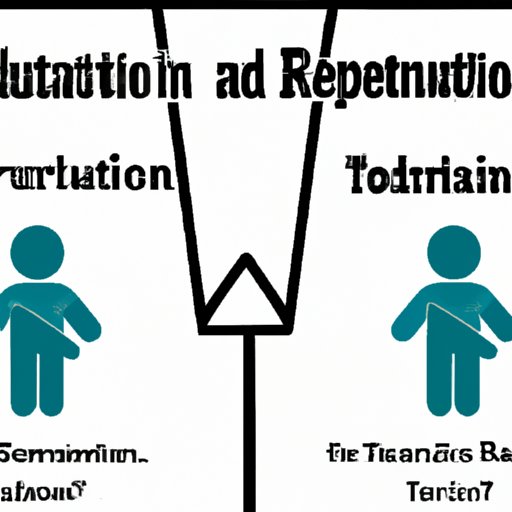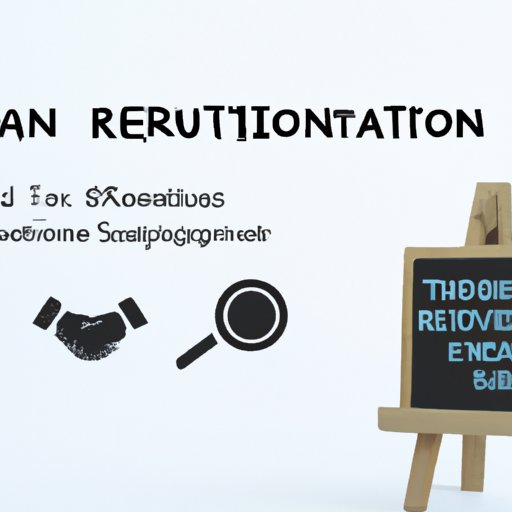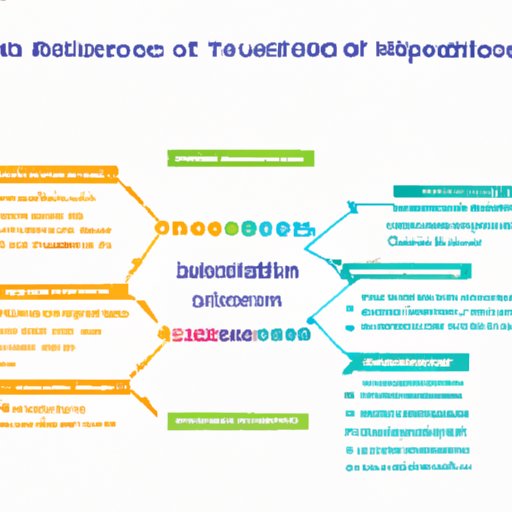Introduction
Talent acquisition and recruitment are two terms that are often used interchangeably in the world of Human Resources (HR). However, while they are both related to the process of finding and hiring new employees, there are important differences between the two that need to be understood. In this article, we will explore what is the difference between talent acquisition and recruitment, looking at the role of human resources, the objectives of each, the scope, the skills required, the tools used, the processes involved, the stages, the outcomes, and the impact.

Compare and Contrast: Talent Acquisition vs. Recruitment
To understand the differences between talent acquisition and recruitment, let’s first look at how they are defined. Talent acquisition is the process of sourcing and hiring qualified candidates for open roles within an organization. It is a strategic approach to recruitment that focuses on long-term planning and building relationships with potential candidates. Recruitment, on the other hand, is the process of actively searching for and engaging potential candidates to fill open roles. It is more tactical in nature and is focused on filling open positions quickly.
While talent acquisition and recruitment are two distinct processes, there are some similarities between them. Both involve sourcing, screening, and interviewing potential candidates, as well as onboarding new hires. They also share the goal of finding the best possible fit for the position and organization.
However, there are key differences between talent acquisition and recruitment that must be considered. Let’s take a closer look at these differences.
Exploring the Key Differences Between Talent Acquisition and Recruitment
The role of Human Resources is one of the main differences between talent acquisition and recruitment. In talent acquisition, HR plays a more strategic role. They are involved in the long-term planning of the recruitment process and are responsible for building relationships with potential candidates. In recruitment, HR takes on a more tactical role, focusing on filling open positions quickly.
The objectives of talent acquisition and recruitment are also different. The goal of talent acquisition is to source, attract, and retain top talent for the organization. This involves developing strategies to identify and engage qualified candidates, as well as creating programs to help retain those employees. The goal of recruitment, on the other hand, is to fill open positions with qualified candidates as quickly as possible.
The scope of talent acquisition and recruitment is another key difference. Talent acquisition is a long-term process that focuses on building relationships with potential candidates and developing strategies to source and attract top talent. Recruitment is a short-term process that focuses on filling open positions quickly. Therefore, the scope of talent acquisition is much broader than that of recruitment.

The Essentials of Talent Acquisition and Recruitment
The skills required for talent acquisition and recruitment are also distinct. Talent acquisition requires a deep understanding of the organization, its culture, and its goals. It also requires knowledge of the labor market and the ability to build relationships with potential candidates. Recruitment requires strong communication and interpersonal skills, as well as an understanding of the job market. It also requires the ability to quickly assess candidate qualifications and determine which ones are the best fit for the position.
The tools used for talent acquisition and recruitment are also different. Talent acquisition relies heavily on technology, such as applicant tracking systems and social media platforms, to source and engage potential candidates. Recruitment, on the other hand, typically relies on more traditional methods, such as job boards and newspaper advertisements.
The processes involved in talent acquisition and recruitment are also distinct. Talent acquisition involves developing strategies to source and attract top talent, as well as creating programs to help retain those employees. Recruitment, on the other hand, involves actively searching for and engaging potential candidates, as well as onboarding new hires.
How Are Talent Acquisition and Recruitment Different?
The stages of talent acquisition and recruitment are also different. Talent acquisition typically involves four stages: planning, sourcing, screening, and onboarding. Recruitment, on the other hand, typically involves three stages: sourcing, screening, and onboarding.
The outcomes of talent acquisition and recruitment are also distinct. The outcome of talent acquisition is a pipeline of qualified candidates who are interested in working for the organization. The outcome of recruitment is a pool of qualified candidates who are ready to start work immediately.
The impact of talent acquisition and recruitment is another key difference. Talent acquisition has a greater impact on the organization’s long-term success, as it helps to ensure that top talent is sourced and retained. Recruitment, on the other hand, has a more immediate impact, as it helps to fill open positions quickly.
What is the Difference between Talent Acquisition and Recruitment?
The benefits of talent acquisition over recruitment include increased efficiency, cost savings, improved employee retention, and enhanced employer brand. The benefits of recruitment over talent acquisition include faster time-to-hire and more accurate candidate selection. Ultimately, the best practices for talent acquisition and recruitment involve a combination of both approaches.
Conclusion
In conclusion, talent acquisition and recruitment are two distinct processes that are often confused. While they are both related to the process of finding and hiring new employees, there are important differences between the two that need to be understood. These include the role of human resources, the objectives of each, the scope, the skills required, the tools used, the processes involved, the stages, the outcomes, and the impact. Ultimately, the best practices for talent acquisition and recruitment involve a combination of both approaches.
(Note: Is this article not meeting your expectations? Do you have knowledge or insights to share? Unlock new opportunities and expand your reach by joining our authors team. Click Registration to join us and share your expertise with our readers.)
